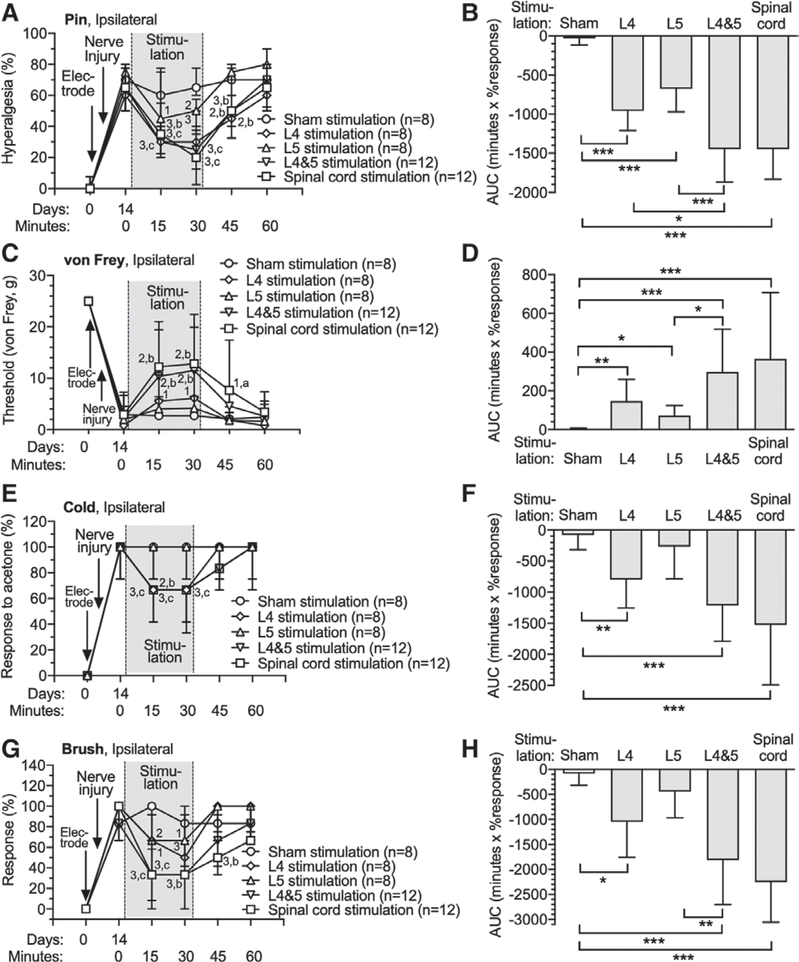Fig. 2.
Effects of dorsal root ganglion stimulation and spinal cord stimulation on rats with tibial nerve injury. Dorsal root ganglion stimulation or spinal cord stimulation electrodes were implanted immediately after the baseline (day 0) behavioral determinations. Animals were assigned only to one treatment group and electrodes were only inserted at the sites at which active treatment was given. Tibial nerve injury surgeries were performed 7 days after the electrode implantation. Time course for effects are shown in the left panels, and area under curve analysis for group comparisons are shown in the right panels, for sensitivity to noxious mechanical stimuli (pin [A, B]), threshold mechanical stimuli (von Frey [C, D]), cold (E, F), and brush (G, H). The Sham treatment group consisted of animals with a spinal cord stimulation electrode or dorsal root ganglion stimulation electrode (at L4 and L5) that were inserted but not activated. Results in A, E, and G are median ± interquartile range. Results in B, C, D, F, and H are mean ± SD. *P < 0.05, **P < 0.01, ***P < 0.001 by the Tukey test after one-way ANOVA. 1, P < 0.05; 2, P < 0.01; and 3, P < 0.001 compared to data immediately before dorsal root ganglion stimulation; a, P < 0.05; b, P < 0.01; and c, P < 0.001 compared to Sham treatment group by the Dunnett test after two-way repeated measures ANOVA with Greenhouse–Geisser correction; n, number of animals.

